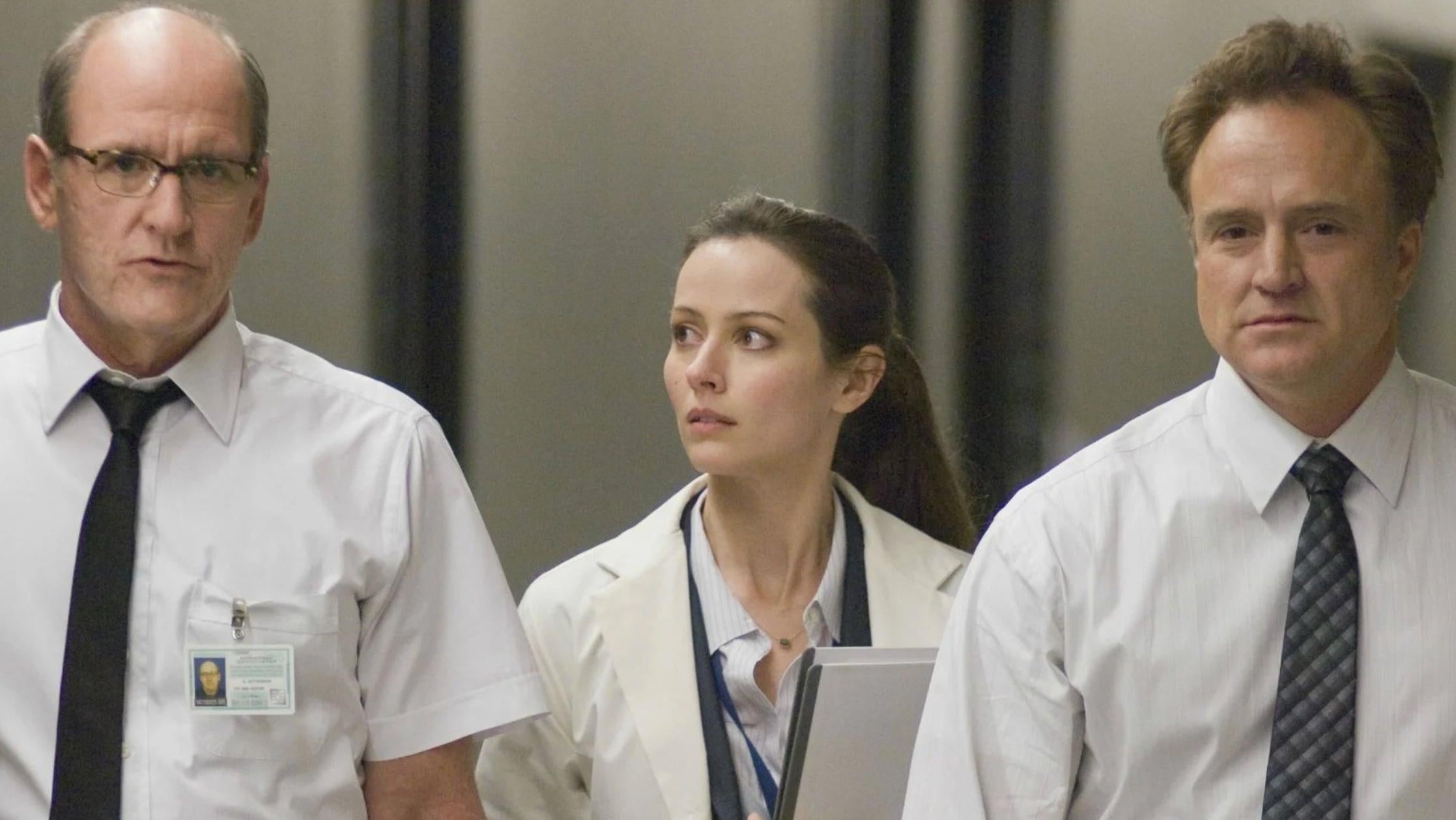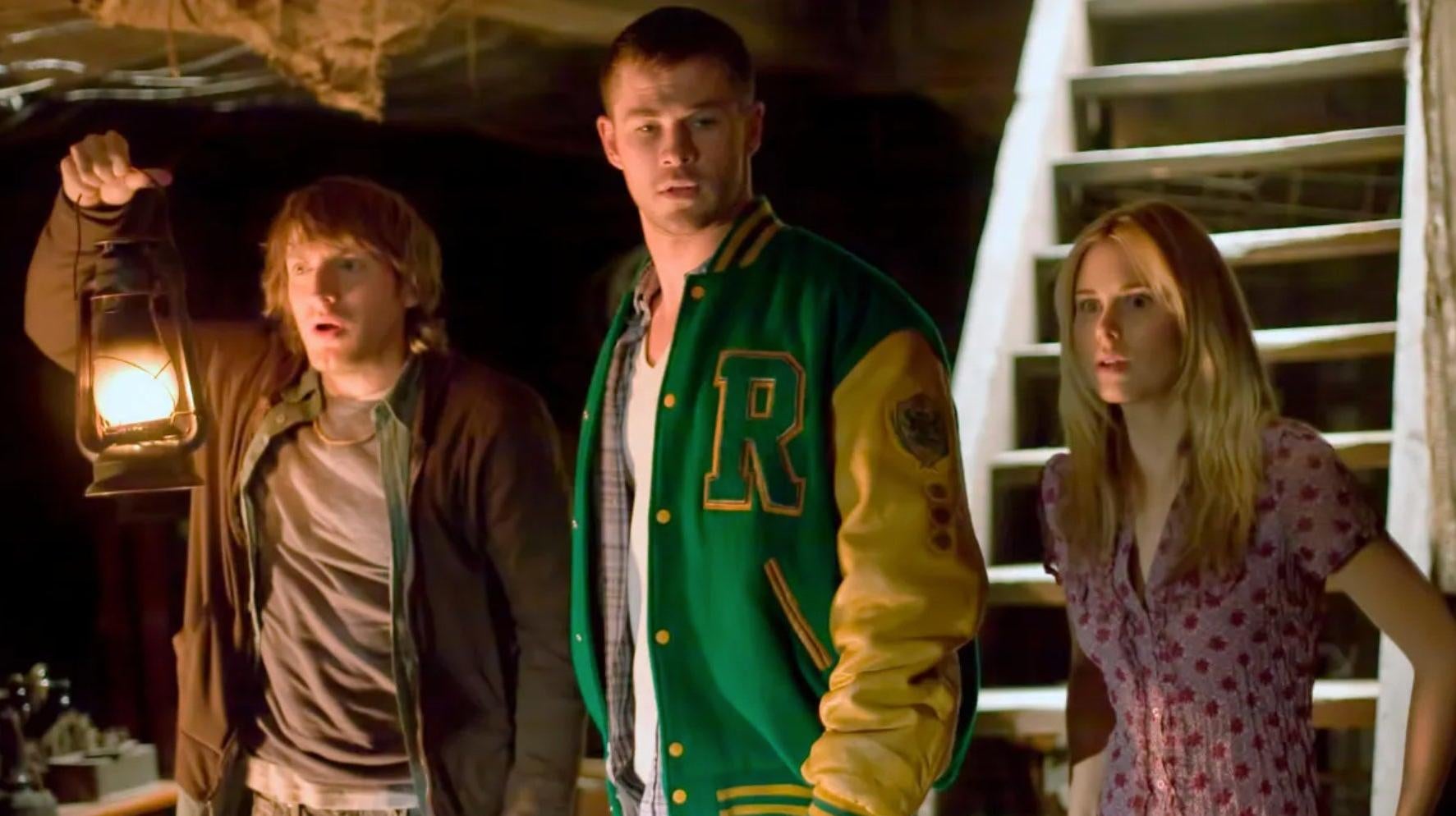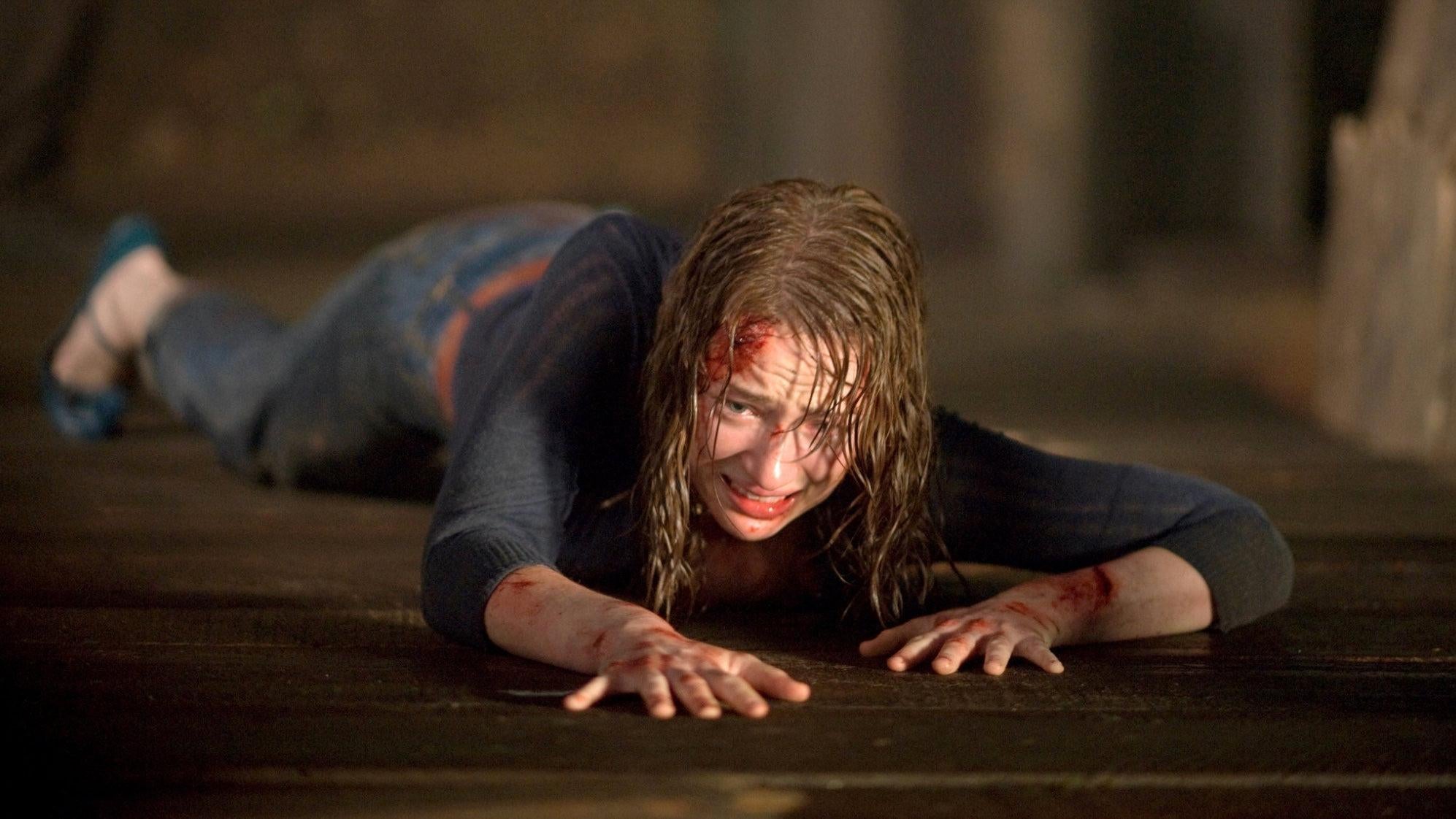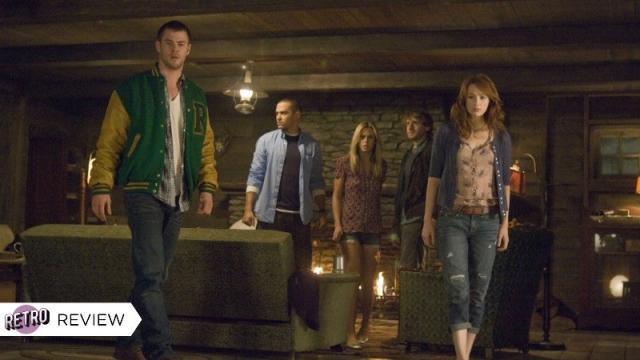The Cabin in the Woods is a miracle. A singular story packed with biblical stakes, dense mythology, surprises, excitement, and most importantly, little to no room for any type of follow-up, all in one 95-minute package. Released just 10 years ago today, it almost qualifies as a relic from a forgotten age which is one of the many reasons why The Cabin in the Woods still works so well, despite that unfortunate black mark it now carries.
We’re talking, of course, about Joss Whedon. Whedon, who produced and co-wrote the film, was once the King of all Geeks. The name among names when it came to blockbuster genre films and TV shows. In recent years though, the creator of Buffy the Vampire Slayer, Angel, and Firefly, and the director of The Avengers, has fallen from grace due to accusations of inappropriate, abusive behaviour from actors such as Buffy’s Charisma Carpenter and Justice League’s Ray Fisher. As a result, sitting down to watch any of Whedon’s work now (similar to films by Woody Allen, Mel Gibson, Harvey Weinstein, and others) it’s not always easy to forget the fact and embrace the fiction. In the case of The Cabin in the Woods, it’s even murkier. The whole film is a deconstruction of sexist, offensive, outdated tropes, so their inclusion in this specific film makes sense, even if they aren’t exactly OK. Plus, most importantly, they get wiped off the face of the Earth at the end. Basically, there’s a lot of baggage to unpack. Let’s get to it.
Released wide on April 13, 2012, The Cabin in the Woods is directed by Drew Goddard (Daredevil) and co-written by Goddard and Whedon. It follows a group of college students (played by Kristen Connolly, Fran Kranz, Anna Hutchison, Jesse Williams, and, most interestingly, Chris Hemsworth, who shot this before Thor, though it was released after) who go on a vacation to the titular location, only to find out they’re the subjects of an elaborate ritual with global stakes. Here’s where, if you haven’t seen The Cabin in the Woods, you might want to click away due to spoilers. But after 10 years, if you haven’t been spoiled already, now’s as good a time as any.

The Cabin in the Woods is filled with huge secrets and, rewatching for the first time in a few years, you forget it does its best to tease them right from the beginning. First, there’s a short credit section told over a bunch of god-like hieroglyphics, which seems odd at the time. That’s then followed by the seemingly disjointed prologue of two office workers (played by Emmy winners Richard Jenkins and Bradley Whitford) starting their day. Neither scene fits in with traditional horror expectations, which makes it obvious The Cabin in the Woods has more to it than just kids dying in the woods. From there, each subsequent scene pulls the curtain back ever so slightly until it’s revealed the five students staying in the cabin are to be sacrificed by a supernatural being of their choosing in order to appease ancient gods. Every year, these gods must be paid tribute to in a very specific way, otherwise they’ll get angry and rise from the Earth to destroy it.
Just reading that out loud, isn’t it simply one of the coolest, most intriguing ideas ever? On the surface, you have what looks like a run-of-the-mill horror movie scenario with kids being murdered by zombies. But below that is this whole other group of very normal people whose job is to kill strangers in order to save the world. Usually saving the world is heroic. Here it’s disturbing. The Cabin in the Woods positions the workers as villains, even though they have selfless, noble intentions. They see themselves as saviors, but since the audience is following the victims, we’re stuck in the middle. It’s a fascinating flip on not just horror movies but the notion of heroism itself.

Expanding on that, we learn this sacrifice scenario plays out all over the world, every single year. However this year, as the film begins, everyone else has failed. It’s down to the U.S. killing these kids or the entire world ends. The stakes simply couldn’t be higher. And if you didn’t quite get how the movie was a deconstruction of modern cinematic tropes, the workers downstairs led by Jenkins and Whitford basically become the writer and director of a film. Using all manner of tricks at their disposal, they guide their characters to their respective dooms. They’re the maestros of mayhem. Until, of course, it all goes horribly wrong.
If The Cabin in the Woods was just this cool idea of corporate puppeteers killing kids, it probably would have been a solid flick. But to really go the extra mile, Whedon and Goddard craft one of the most memorable third acts of the era as the final two survivors (Connolly’s Dana and Kranz’s Marty) find their way down into the nerve centre of the operation. There, in order to proceed, they simultaneously unleash every single monster, spirit, creature, etc. that’s at the cabin’s disposal on an unsuspecting workforce. The result is a batshit crazy symphony of death, with dozens of creatures all killing the downstairs employees in increasingly hilarious, disgusting ways. All of which leads to Dana and Marty meeting the Director (Sigourney Weaver in a surprise cameo) who explains if they don’t die, the whole world dies. They choose the latter.
There are so many things I love about The Cabin in the Woods, all of which are as true today as they were 10 years ago. It’s an exciting, propulsive movie on all levels. It pulls no punches. The ideas in it get exponentially bigger, and the more you think about it, the more interesting it becomes. Beyond just a cool horror film, it’s a meta-dissection of the genre, filmmaking in general, and society as a whole. Both in the film and in reality, there’s way more going on below the surface.
Which brings us back to Joss Whedon. Today, watching anything with Whedon’s name on it, especially something like The Cabin in the Woods which features beautiful young people walking around in their underwear, taking their clothes off, or any manner of over-sexualizing them, makes an audience member with knowledge of his actions take notice. You think, “Does Whedon have bad intentions here?” And even if the answer is “Yes,” in The Cabin in the Woods, it actually does fit and drive the narrative. The Cabin in the Woods is very specifically riffing and subverting horror films of the 1980s which 100% prioritised sex in a very overt, now-dated way. So, to send up a genre, it chooses to call attention to the genre. The story also makes it clear that sex is part of what’s needed to appease the gods. OK, then there’s also a very creepy scene of dozens of men staring and waiting for Hutchison’s character to take her top off, which is excessive and not funny like it was probably intended in 2012, but again, it’s on a checklist. It has to be done, or the world ends.

And ultimately, after all that, that The Cabin in the Woods has the guts to end by destroying everything and everyone on Earth just puts the whole thing over the top. The world where all these lewd, crude things are OK is wiped away. It’s time for humanity to end and someone else to get a chance, the characters say. Which, in 2012, seemed kind of weird and overly pessimistic. But after the decade we’ve suffered since, it rings way truer now. Our world might actually be beyond saving. And The Cabin in the Woods wipes those wrongs away with two teenagers smoking a joint.
Upon release, The Cabin in the Woods ended up doing OK at the box office, grossing about double its budget. Not bad, but not good enough for the studio to think about sequels. If it had been a hit though, despite its kitchen-sink mentality, there were certainly other stories that could have been told. Prequels with other victims. Concurrent stories set in different countries. The fallout of the gods being unleashed. All of these stories, hypothetically, could have been told. But they’re all unnecessary. The Cabin in the Woods did the thing audiences always say they want but rarely appreciate. Original, exciting, contained storytelling with an edge. And this one’s as sharp as ever 10 years after its release, even with that one dark mark.
The Cabin in the Woods isn’t streaming for free but is available on Blu-ray and to rent or buy on most digital services.
